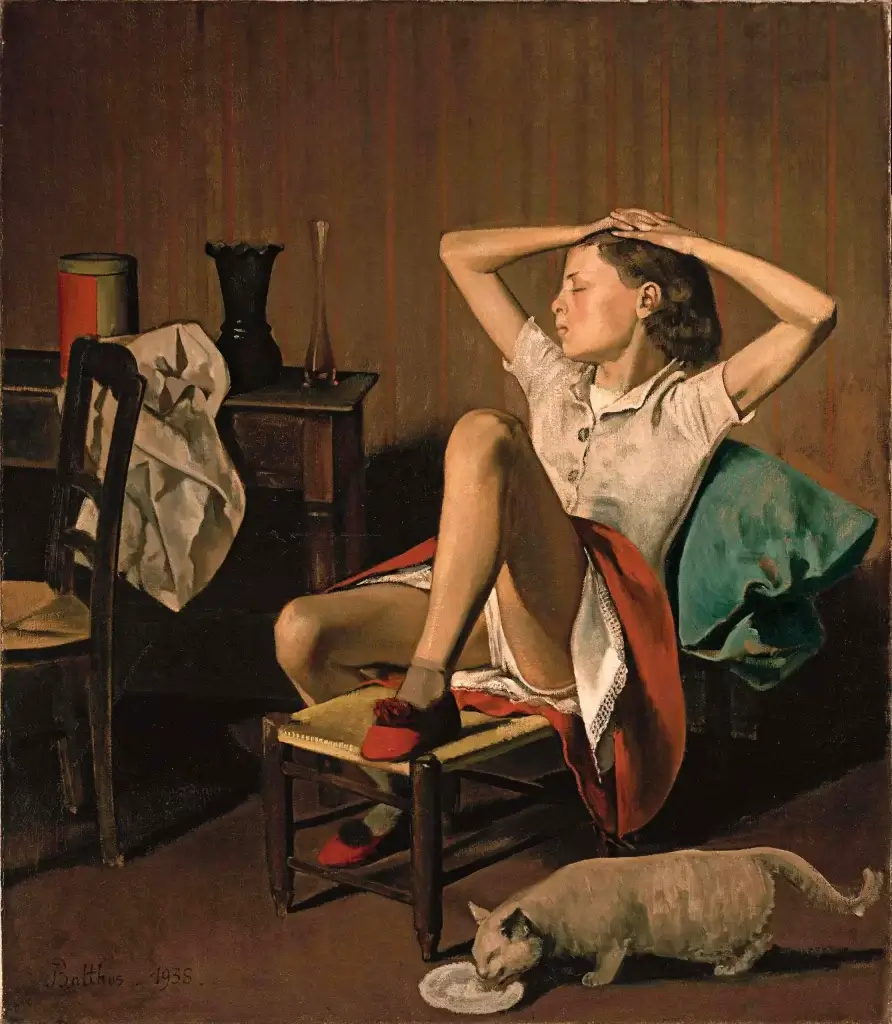Balthus, born Balthasar Klossowski de Rola, is a renowned artist whose work often stirs debate. His 1938 painting “Thérèse Dreaming” is no exception. The artwork depicts a young girl in a relaxed pose, which has sparked discussions about the ethical boundaries of artistic expression. This article delves into the arguments against this controversial masterpiece.

Sexualization of Minors in Art
One of the primary criticisms of “Thérèse Dreaming” centers around the perceived sexualization of the underage subject. Critics argue that the painting crosses a line by portraying the young girl in a manner that could be interpreted as suggestive. This raises concerns about the depiction of minors in art and the potential normalization of inappropriate themes.
Exploitation and Objectification
Opponents of the painting suggest that it objectifies the subject, reducing her to a mere artistic element rather than portraying her as a person with agency. The passive demeanor and the intimate setting contribute to the notion that the subject is being exploited for artistic gain. This perspective challenges the ethics of representing individuals, especially minors, in vulnerable positions.
Ethical Responsibilities of the Artist
The debate extends to the responsibilities artists hold when creating and displaying their work. Should artistic freedom have limits when it involves sensitive subjects? Critics of Balthus believe that artists should be mindful of the messages their work conveys and the potential impact on audiences. The painting prompts a discussion on where to draw the line between creative expression and ethical considerations.
Modern Perceptions and Cultural Shifts
When “Thérèse Dreaming” was created, societal norms differed significantly from today’s standards. Contemporary audiences may view the painting through a modern lens, leading to increased discomfort and criticism. The evolving understanding of consent and exploitation influences how such artworks are perceived and assessed in current times.
The Art vs. Ethics Debate
The controversy surrounding Balthus’s painting highlights the ongoing tension between artistic freedom and moral responsibility. While some defend the artwork as a product of its time and a legitimate form of expression, others believe that certain subjects should be approached with greater sensitivity. This debate is crucial in the art world, prompting reflections on how artists can responsibly explore complex themes.
Conclusion
“Thérèse Dreaming” remains a polarizing piece that challenges viewers to consider the ethical implications of art. The criticisms against Balthus’s work underscore the importance of context, intent, and societal values in interpreting artwork. As conversations about representation and ethics continue, this painting serves as a focal point for discussions about the responsibilities of artists and the impact of their creations on audiences.


























